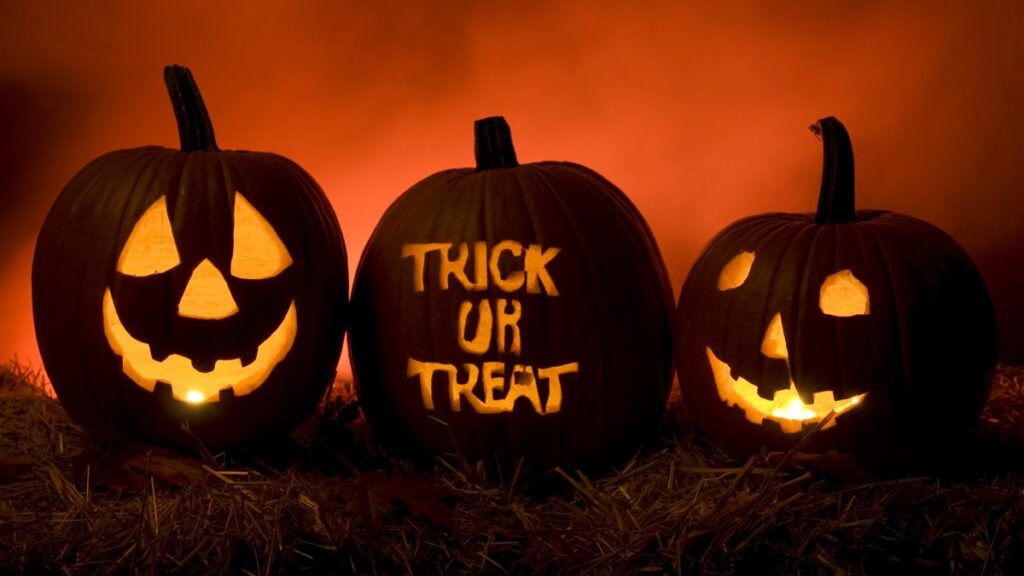 Halloween is an unofficial holiday celebrated each year on October 31, and Halloween 2021 occurs on Sunday, October 31. The tradition originated with the ancient Celtic festival of Samhain, when people would light bonfires and wear costumes to ward off ghosts. In the eighth century, Pope Gregory III designated November 1 as a time to honour all saints. Soon, All Saints Day incorporated some of the traditions of Samhain. The evening before was known as All Hallows Eve, and later Halloween. Over time, Halloween evolved into a day of activities like trick-or-treating, carving jack-o-lanterns, festive gatherings, donning costumes and eating treats.
Halloween is an unofficial holiday celebrated each year on October 31, and Halloween 2021 occurs on Sunday, October 31. The tradition originated with the ancient Celtic festival of Samhain, when people would light bonfires and wear costumes to ward off ghosts. In the eighth century, Pope Gregory III designated November 1 as a time to honour all saints. Soon, All Saints Day incorporated some of the traditions of Samhain. The evening before was known as All Hallows Eve, and later Halloween. Over time, Halloween evolved into a day of activities like trick-or-treating, carving jack-o-lanterns, festive gatherings, donning costumes and eating treats.
Background:
Halloween’s origins date back to the ancient Celtic festival of Samhain (pronounced sow-in). The Celts, who lived 2,000 years ago, mostly in the area that is now Ireland, the United Kingdom and northern France, celebrated their new year on November 1.
This day marked the end of summer and the harvest and the beginning of the dark, cold winter, a time of year that was often associated with human death. Celts believed that on the night before the new year, the boundary between the worlds of the living and the dead became blurred. On the night of October 31 they celebrated Samhain, when it was believed that the ghosts of the dead returned to earth.
In addition to causing trouble and damaging crops, Celts thought that the presence of the otherworldly spirits made it easier for the Druids, or Celtic priests, to make predictions about the future. For a people entirely dependent on the volatile natural world, these prophecies were an important source of comfort during the long, dark winter.
To commemorate the event, Druids built huge sacred bonfires, where the people gathered to burn crops and animals as sacrifices to the Celtic deities. During the celebration, the Celts wore costumes, typically consisting of animal heads and skins, and attempted to tell each other’s fortunes.
When the celebration was over, they re-lit their hearth fires, which they had extinguished earlier that evening, from the sacred bonfire to help protect them during the coming winter.
All Saints’ Day
On May 13, 609 A.D., Pope Boniface IV dedicated the Pantheon in Rome in honor of all Christian martyrs, and the Catholic feast of All Martyrs Day was established in the Western church. Pope Gregory III later expanded the festival to include all saints as well as all martyrs, and moved the observance from May 13 to November 1.
By the 9th century, the influence of Christianity had spread into Celtic lands, where it gradually blended with and supplanted older Celtic rites. In 1000 A.D., the church made November 2 All Souls’ Day, a day to honor the dead. It’s widely believed today that the church was attempting to replace the Celtic festival of the dead with a related, church-sanctioned holiday.
All Souls’ Day was celebrated similarly to Samhain, with big bonfires, parades and dressing up in costumes as saints, angels and devils. The All Saints’ Day celebration was also called All-hallows or All-hallowmas (from Middle English Alholowmesse meaning All Saints’ Day) and the night before it, the traditional night of Samhain in the Celtic religion, began to be called All-Hallows Eve and, eventually, Halloween.
Halloween’s Trick or Treat
Borrowing from European traditions, Americans began to dress up in costumes and go house to house asking for food or money, a practice that eventually became today’s “trick-or-treat” tradition. Young women believed that on Halloween they could divine the name or appearance of their future husband by doing tricks with yarn, apple parings or mirrors.
In the late 1800s, there was a move in America to mould Halloween into a holiday more about community and neighbourly get-togethers than about ghosts, pranks and witchcraft. At the turn of the century, Halloween parties for both children and adults became the most common way to celebrate the day. Parties focused on games, foods of the season and festive costumes.
Parents were encouraged by newspapers and community leaders to take anything “frightening” or “grotesque” out of Halloween celebrations. Because of these efforts, Halloween lost most of its superstitious and religious overtones by the beginning of the twentieth century.
Spiritual Reflections
That Halloween reflects hallows, meaning that which is hallowed – that which is worthy of religious veneration – and hallow – to render holy by means of religious rites.
All Hallows Eve is the night before All Saints Day, a day on which the church commemorates their communion with the Saints before the throne of the Most High, seeking the intercession and prayers of the Saints; the church prays with the saints, hence the communion of Saints. Then follows All Souls Day, wherein those who are the Church on Earth pray for those who have fallen asleep or passed over before us. These are ancient traditions held and taught by the early church fathers, such as Cyril of Jerusalem.
So there is a focus on holiness, on wholeness: there is a past, a present and a future, toward which we all live in humility and hope of heaven. Consciousness continues, and there is a very strong tradition in many religions of making offerings and prayers for the manes, the ancestors, the pitrus. Some religions have an annual period wherein daily offerings are made for the ancestors who are able to come to Earth at these special times. These are annual practices not at all far removed from those of the church.
Is Halloween Harmless?
Some say it is, some say it is not. Emulating the Americans with trick-or-treat and dressing up as witches, warlocks, ghouls and ghosts is a night of fun for children (and adults, in many places). Those who are more serious say that these times are times which are open to interpenetration by the spirits and souls of the departed, not all of whom have benign, goodly intentions. Those who have died in horror will have horrible vibrations; those who have died drunk or passed due drug overdose will be similarly affected. Unless healing is passed on to the deceased, they continue in the state they passed over – as per the teaching of Lord Krishna in the Bhagavad Gita.
Children’s fun and happiness is fine (absolutely!), other matters not so fine; seances, ouija boards, inhabiting graveyards, mocking and calling on the deceased at this anniversary time may elicit matters filled with some risk, and skilful behaviour is not acquired by how many movies have been watched about killing zombies with stakes, crucifixes and holy water. Ordinary people may not have the skills to prevent being possessed. Consider the following:
Spiritual realities are very real.
All religions and churches deal with the spiritual realm in positive ways on behalf of religious worshippers.
In other spiritual matters, training, skill, higher consciousness and self awareness are necessary when one engages with the spiritual realm.
What would one say of exorcists who encounter disembodied spirits that take name and form, shape and colour?
What would you do?

![]()

